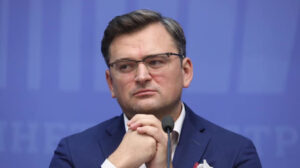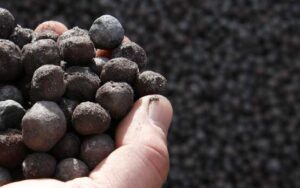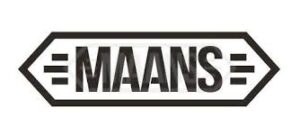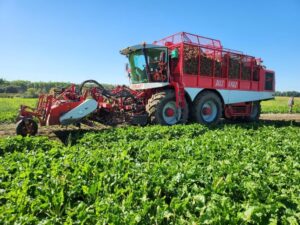
Metallurgical enterprises of Ukraine in March of this year increased steel production by 15.8% compared to the same period in 2023 – to 611 thousand tons from 527 thousand tons.
At the same time, Ukraine took 21st place in the ranking of 71 countries – global producers of these products, compiled by the World Steel Association (Worldsteel).
According to Worldsteel, in March an increase in steel production was recorded by March 2023 in most countries of the top ten, except China, Japan and South Korea.
The top ten steel-producing countries at the end of March are as follows: China (88.270 million tons, a decrease of 7.8% compared to March 2023), India (12.709 million tons, an increase of 7.8%), Japan (7.197 million tons , decrease by 3.9%), USA (6.906 million tons, at the level of March 2023), Russia (6.640 million tons, increase by 0.8%), South Korea (5.282 million tons, down by 9.5%) , Germany (3.510 million tons, up 8.4%), Turkey (3.202 million tons, up 18%), Brazil (2.787 million tons, up 5.6%) and Iran (2.774 million tons, up 2 %).
In total, in March 2024, steel production decreased by 4.3% compared to the same period in 2023 – to 161.190 million tons.
In January-March 2024, the top ten steel producing countries are as follows: China (256.550 million tons, a decrease of 1.9% compared to January-March 2023), India (37.327 million tons, an increase of 9.7%), Japan ( 21.452 million tons, down 0.8%), USA (19.936 million tons, down 1.6%), Russia (18.680 million tons, down 0.2%), South Korea (16.245 million tons, down 2 .5%), Germany (9.704 million tons, an increase of 6%), Turkey (9.533 million tons, an increase of 28.4%), Brazil (8.293 million tons, an increase of 6.2%) and Iran (7.616 million tons , higher by 16.3%).
In general, over the 3 months of 2024, steel production increased by 0.5% compared to the same period in 2023 – to 469.060 million tons.
At the same time, Ukraine produced 1.687 million tons of steel in 3 months of 2024, which is 36.6% higher than the volumes for the same period in 2023 (for 3 months of 2023 – 1.235 million tons). The country is in 22nd place based on the results of 3 months – 2024.
As reported, in 2023, China produced 1 billion 19.080 million tons at the level of the previous year), India (140.171 million tons, +11.8%), Japan (86.996 million tons, -2.5%), USA (80.664 million tons , +0.2%), Russia (75.8 million tons, +5.6%), South Korea (66.676 million tons, +1.3%), Germany (35.438 million tons, -3.9%), Turkey (33.714 million tons, -4%), Brazil (31.869 million tons, -6.5%) and Iran (31.139 million tons, +1.8%).
In total, 71 countries produced 1 billion 849.734 million tons of steel in 2023, which is 0.1% less than in 2022.
At the same time, Ukraine produced 6.228 million tons of steel in 2023, which is 0.6% lower than the volumes for 2022. The country is in 22nd place by the end of 2023.
At the end of 2022, the top ten steel producing countries looked like this: China (1.013 billion tons, -2.1%), India (124.720 million tons, +5.5%), Japan (89.235 million tons, -7.4 %), USA (80.715 million tons, -5.9%), Russia (71.5 million tons, -7.2%), South Korea (65.865 million tons, -6.5%), Germany (36.849 million tons , -8.4%), Turkey (35.134 million tons, -12.9%), Brazil (33.972 million tons, -5.8%) and Iran (30.593 million tons, +8%).
At the end of 2022, Ukraine took 23rd place with the production of 6.263 million tons of steel (-70.7%).
In total, in 2022, 64 countries produced 1 billion 831.467 million tons of steel, which is 4.3% less than in 2021.

Ukraine and Latvia are working to increase drone production, Ukrainian Foreign Minister Dmytro Kuleba has said.
During a joint press conference in Kyiv with Latvian Foreign Minister Baiba Braže, Kuleba noted the great potential of Ukrainian and Latvian companies to increase production of attack UAVs.
“I am very grateful to Latvia for its leadership in the Drone Coalition. We are now working together to increase this production – we need more drones. I believe that Ukrainian and Latvian companies can really do a lot in this direction,” he said.
The minister also noted Latvia’s decision to join the Czech initiative to purchase artillery shells and noted that the production of shells was one of the central issues during the bilateral talks.
Kuleba also thanked Braža for making her first visit in her new position to Ukraine, which is a sign of special respect for Ukraine and its defenders.

Ferrexpo plc, a mining company with major assets in Ukraine, produced 3.814 million tonnes of pellets in January-March this year, up twice year-on-year (0.901 million tonnes) and 2.9 times more than in the previous quarter (0.627 million tonnes).
“Our operations delivered exceptional results in the first quarter, with total production up 203% quarter-on-quarter to over two million tonnes of iron ore pellets and concentrate. This is our best quarterly result since the full-scale invasion of Ukraine,” Executive Chairman Lucio Genovese said in a release on Tuesday.
It is specified that the total production of commercial products (pellets and iron ore concentrate) in the first quarter of this year amounted to 2.054 million tons, which is 2.1 times higher than in the first quarter of 2023 and 3 times higher than in the previous quarter. In particular, the production of saleable concentrate in January-March 2024 amounted to 241 thousand tons, compared to 53 thousand tons in January-March 2023 and 50 thousand tons in October-December 2023.
Genovese noted that Ferrexpo was able to export products from Ukrainian ports again during the quarter, which allowed it to supply larger volumes to Europe and resume sales to customers in the Middle East and North Africa and Asia.
According to him, the company is currently seeing an increase in the conscription of its employees: 669 Ferrexpo employees are serving in the army, which is the highest figure since the start of the full-scale invasion, while 67 employees have returned and a veterans’ reintegration program is underway.
“While we consider the level of risk acceptable given the ongoing war in Ukraine, we will continue to utilize all available export capacity to ensure that the interests of all stakeholders are supported,” Genovese concluded.
The Group also successfully operated two and sometimes three pelletizing lines (out of four) during the quarter, changing product quality depending on customer demand and expanding logistics capabilities.
Total sales for the quarter amounted to 1.992 million tons, producing only pellets with an iron content of 65%.
As reported, Ferrexpo produced 3.845 million tons of pellets in 2023, down 36.5% from 2022.
Ferrexpo owns a 100% stake in Yeristovo Mining, 99.9% in Bilanivsky GOK and 100% in Poltava Mining.
The company ended 2023 with a net loss of $84.8 million compared to a net profit of $220.0 million in 2022. Revenue for 2023 fell by 47.8% to $651.8 million, and EBITDA by 83% to $130.2 million.

Ruta, a major Ukrainian manufacturer of sanitary and hygienic paper products, whose management company is VGP JSC (Lutsk), produced products worth UAH 417.4 million in January-March, up 8.2% compared to the same period in 2023.
According to Ukrpapir Association’s statistics provided to Interfax-Ukraine, in physical terms, in particular, the production of toilet paper in rolls increased by 1.7% to 31.9 million units, which remains the third result in the industry after Kyiv Cardboard and Paper Mill (64.5 million units) and Kokhava Paper Mill (37.7 million units).
Thus, in the first quarter, the company slowed its production growth rate in monetary terms compared to the same period in 2023, which amounted to 13.8% in the first two months. The growth rate of production in physical terms also slowed.
The company produces cellulose-based sanitary products from imported base paper.
VGP’s brand portfolio includes napkins, toilet paper, paper handkerchiefs, and kitchen towels under the Ruta, Ruta Selecta, Fesko, Nosovic, Polotenchko, 100% paper, Servetta, and Ecolo brands. The assortment includes more than 180 items.
As reported, in 2023, the company produced products worth UAH 1 billion 611 million, which is 64.8% more than in 2022.
According to the Clarity-project resource, in 2023, the company received UAH 185.2 million in net profit, up from UAH 3.6 million a year earlier.

Production and design association “MAANS” (Rivne region), one of the largest manufacturers of equipment and spare parts, has increased production of agricultural machinery despite the war, reported the press service of Rivne regional military administration.
“Despite the war, the company has increased the production of its products by 2 times. Last year “MAANS” paid more than 31 million UAH of taxes to the budgets of all levels and ended the year with a profit. The wages of employees are gradually increasing. Today 140 workplaces have been created here”, – said the deputy head of the OBA Alexander Kohan.
“MAANS” has modern production facilities with an area of 9 thousand square meters. meters. There is equipment for cutting, bending, stamping, heat treatment, milling, welding and grinding of metal. There is a full cycle of production of cutterbars, carts for them, spare parts and consumables for them, noted in OBA.
The enterprise exports one-third of its production abroad. “MAANS” also joined the state platform “Made in Ukraine”: 27 units of equipment are in the list of the state program of compensation for the cost of agricultural machinery.
PE “VKO “MAANS” was registered in 2010 in Zdolbuniv, Rivne region. The authorized capital of the enterprise is 100 thousand UAH. Its beneficiaries are Stanislav Seredyuk (70%) and Igor Seredyuk (30%).

In 2023, Astarta Agricultural Holding produced 39 thousand tons of sugar beet, up 20% year-on-year, thanks to a record yield of 58 tons/ha compared to 56 tons/ha in 2022, the company said in its annual report on Wednesday evening.
According to the agricultural holding, the record high sugar beet harvest extended the processing period until the end of January 2024. In total, the sugar production campaign in 2023 lasted 130 days, compared to 111 days a year earlier.
“In the 2023-2024 marketing year, Astarta increased sugar production by 34% year-on-year to 377 thousand tons. At the same time, the volume of sugar beet processing in 2023 increased by 37% compared to the same period last year and reached 2.7 million tons. The market share remained unchanged at 21% in 2023, the document says.
The agroholding has engaged more than 100 independent sugar beet producers in eight regions of Ukraine to supply its sugar factories with raw materials. In 2023, they increased the supply of raw materials to 26% of the total volume of this crop processed by the company (18% a year earlier) – up to 707 thousand tons of the crop.
Astarta’s share in Ukraine’s total sugar exports amounted to 12%, or about 50 thousand tons in 2023. Italy and Romania became the key export destinations for the agricultural holding, accounting for 29% and 25% of the company’s exports, respectively. Hungary, Spain and Bulgaria were also among the top five buyers of Astarta’s sugar.
99% of Astarta’s sugar was exported by land, mainly by road (67%) and rail.
Half of the sugar produced was supplied to processing companies, primarily in the food industry, including confectionery, bakery and beverage production.
Astarta also produces by-products such as pressed pulp, dry granulated pulp and molasses from its sugar beet processing and sells them domestically as ingredients for animal feed production for use in its own livestock farming or for biogas production.
The volumes of by-products produced depend on the amount of sugar beet processed, so in 2023 their production volumes increased significantly, the agricultural holding explained. The production of molasses increased by 1.5 times to 98 thousand tons, and pressed pulp – to 1.7 million tons against 1.5 million tons in 2022. Production of granulated beet pulp amounted to 28 thousand tons.
In 2023, Astarta’s bioenergy complex used 145 thousand tons, or 9% of the produced pressed pulp, to produce biogas for its facilities. In addition, 223 tons (approximately 1%) of the produced granulated sugar beet pulp was used as alternative energy at one of the agricultural holding’s sugar plants.
Sugar sales volumes increased by 26% year-on-year to 284 thousand tons in 2023, while the average selling price increased by 3% to EUR 665/ton. Realized prices increased by 18% year-on-year to 26 thousand UAH/ton (excluding VAT).